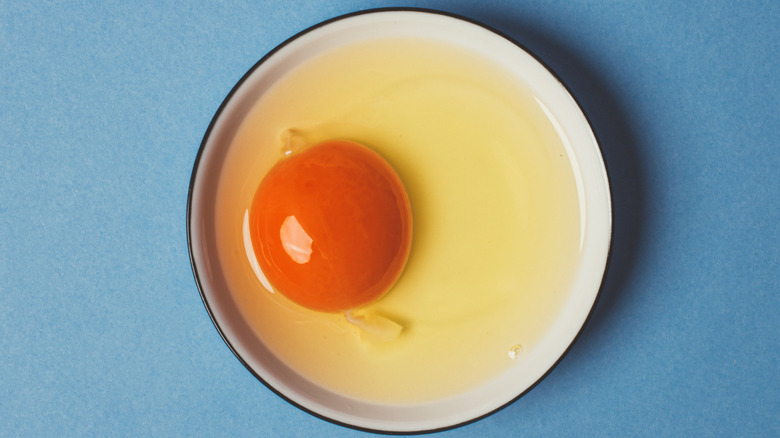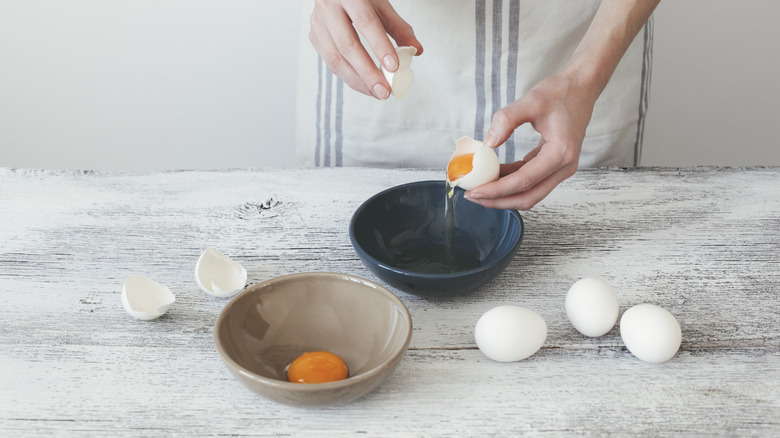Here's Why There's Stringy White Stuff On Your Egg Yolks
Chances are, you've cracked open an egg and seen that little white squiggle attached to the side of the yolk more times than not. You've probably assumed it's perfectly normal since it's present in most eggs. And it is. That small twine-like white thread is called a chalaza, and it's not a vein or an umbilical cord, contrary to popular belief.
The purpose of a chalaza is to keep the egg yolk from jostling into the sides of the egg, so there are typically two in an egg, holding the top and bottom of the yolk to the lining membrane. Without them, there would likely be more chances for the egg yolk to break within the eggshell.
Chalazae (plural for "chalaza") are simply made of protein and are actually just another edible part of your egg. When the egg is cooked, you will rarely notice it since it blends into the rest of the egg during the cooking process. The chalazae are usually visible when the egg is fresh, but they tend to become more translucent in older eggs, so they're much less visibly noticeable if you're finishing up the last eggs that have been sitting in the fridge for a while.
You can remove the chalaza if you wish
If, for some reason, the chalaza still bothers you, you can indeed remove them from each egg. But you have to do it while the egg is still raw, so be prepared to deal with some goop. If you're planning on keeping the yolk intact (such as for a fried egg), use a pair of tweezers to grab it prior to cooking. However, if you're using the egg for ultra-silky scrambled eggs or steamed ones (like Japanese chawanmushi), simply whisk the eggs well first, then run them through a fine-meshed sieve. The sieve will collect any errant solids, and whatever passes through will produce eggs that are smooth and custardy.
Although chalazae are there for a reason, their presence is less important once you've already cracked the egg. So, if you must remove them, it's possible to do so. Otherwise, you're fine cooking the egg as usual — eating them is just as natural as any other part of the egg.

